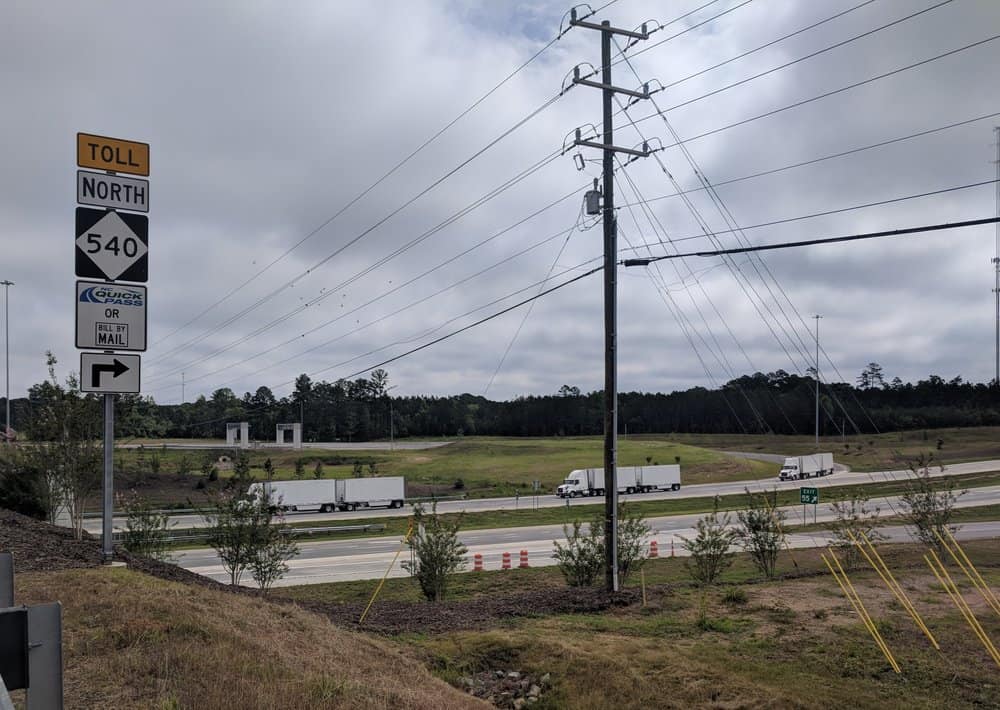
Volvo Trucks North America partnered with FedEx and the North Carolina Turnpike Authority to showcase its advanced driver assistance system technology in a public on-highway platooning demonstration Wednesday.
Volvo has been working with both companies to expand operations using its Cooperative Adaptive Cruise Control on N.C. 540 for several months, but the public showcase was the first of its kind in the United States.
CACC is a wireless vehicle-to-vehicle communication technology. It is intended to help reduce braking reaction time, allowing vehicles to follow closer together and automatically match their speed and braking, according to a Volvo media release.
“Volvo’s V2V technology is based on Dedicated Short-Range Communication (DSRC), which has proven its capability to perform well in the V2V environment,” Keith Brandis, Volvo Trucks North America vice president for product planning, said. “Dedicated bandwidth within the 5.9GHz spectrum is critical for the successful deployment of V2V application, like truck platooning.”
The technology being tested is intended to aid professional drivers, not replace them, according to the release.
Three professional drivers worked with Volvo VNL tractors pulling double 28-foot trailers during Wednesday’s platoon. The trucks used CACC to remain in constant communication while traveling at speeds up to 62 mph, keeping a time gap of 1.5 seconds in real traffic. Staged and unplanned vehicle cut-ins demonstrated how the technology handles common traffic situations.
Volvo Trucks North America Acting President Per Carlsson said Volvo supports platooning because it makes drivers safer and operations more efficient, but the exact timeline for real-world implementation is unclear.
“We continue preparing for deployment of trucks with greater vehicle-to-vehicle communication capabilities that support higher levels of ADAS,” Carlsson said. “We know these technologies will be part of our future, but exact timing depends on many things, namely regulations, infrastructure, safety standards, and market demand.”
Closer following allows for greater fuel efficiency due to reduced drag and helps minimize traffic congestion. Drag can account for up to 25 percent of a truck’s fuel consumption, according to the release.
Increased fuel efficiency is one of the major reasons FedEx decided to partner with Volvo in this research.
“FedEx was built on innovation and it continues to be an integral part of the FedEx culture and business strategy,” said Gloria Boyland, corporate vice president, operations and service support for FedEx. “We are pleased to collaborate with Volvo Trucks and the North Carolina Turnpike Authority to learn more about how platooning technology can benefit our team members while improving fuel efficiency for our fleet.”
Volvo and FedEx both plan to continue developing this advanced technology on N.C. 540 for the foreseeable future in order to study the benefits of platooning and allow participants to adapt to technological and regulatory developments affecting the practice.
Right now, only a handful of states allow truck platooning on their roadways.
Stay up-to-date with the latest commentary and insights on FreightTech and the impact to the markets by subscribing.







